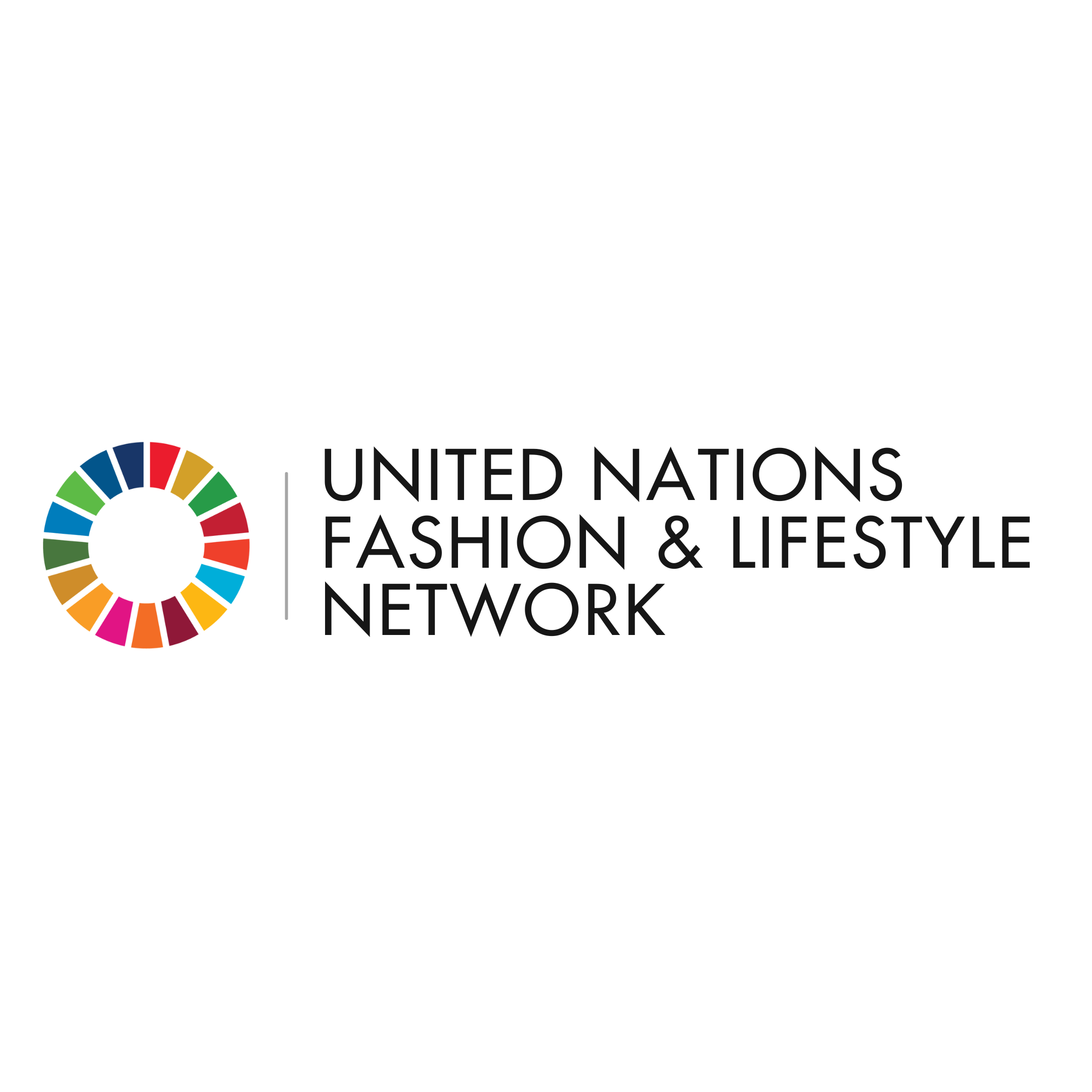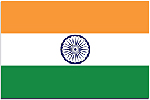Responsible Jewellery Council
Responsible Jewellery Council
(
Non-governmental organization (NGO)
)
#SDGAction56888
Description
The Responsible Jewellery Council is the world’s leading standard-setting organisation for the jewellery and watch industry. Founded in 2005 by 14 member organisations (ABN AMRO, BHP Billiton Diamonds, Cartier, World Jewellery Confederation (CIBJO), Diamond Trading Company (part of De Beers Group), Diarough, Jewelers of America, National Association of Goldsmiths (UK), Newmont Mining, Rio Tinto, Rosy Blue, Signet Group, Tiffany & Co., and Zale Corporation). We bring together over 1900 companies of all sizes, across the global watch and jewellery supply chain, from mining to retail. What unites us is our shared belief that responsible business, without causing harm to people or the planet, can only be achieved by working together, in partnership with others. In 2011 we became ISEAL Code Compliant, meaning that our sustainability system is independently evaluated against ISEAL’s Code of Good Practice – a globally-recognised framework for effective, credible sustainability systems. Our core standard, the Code of Practices (COP) is a common standard for the industry, and mandatory for all commercial members. It requires the implementation of management systems to manage key ethical, social, human rights and environmental risks. The COP aims to align with the prevailing global framework for social inclusion, environmental sustainability and economic development: the Sustainable Development Goals (SDGs). The COP and the SDGs are aligned in many ways and implementing the COP can have a positive impact on several individual SDGs. For example, addressing forced labour in supply chains (COP 20) will help promote decent work and economic growth (SDG 8). Similarly, reducing greenhouse gases (COP 26) will help advance SDG 13 on climate action. All RJC members are encouraged to review their business activities against the SDGs and take steps to incorporate SDGs into their strategic goals and company policies. Becoming COP certified is a starting point for our members, and we encourage them to go beyond this towards generating positive impact. We devised our Roadmap to 2030 and Beyond to guide and inspire RJC members to work together with the wider industry to scale ambition on priority SDGs. It proposes a framework for our industry with respect to the most impactful contributions we can make through our supply chains and provides attainable pathways to help us, and our members realise our collective ambitions.
As previously mentioned, the Code of Practice is our core standard which is compulsory for all commercial members. In addition to this, our Chain of Custody (COC) Standard, defines the requirements for creating a chain of custody of precious metals that are responsibly produced, processed and traded through jewellery supply chains. This standard is voluntary and complements certification against the COP. The RJC team is responsible for maintaining and managing the standards. We have a list of approved auditors who we ensure effectively assess and confirm compliance with these standards. Once the necessary due diligence is satisfactorily completed, certificates are issued to our members. The Assurance Department exists to ensure a credible and quality audit, conducted by objective and competent RJC approved auditors. A robust audit process supports members to implement and maintain the RJC’s Code of Practices and Chain of Custody, as a pathway for companies to address sustainability best practices, responsible sourcing, and supply chain due diligence.
Education has always been an essential part of the Responsible Jewellery Council. From hosting webinars for our members and stakeholders to offering toolkits on implementing a wide range of practices and frameworks, education remains critical in building a more sustainable watch and jewellery industry. Recognising this, at the beginning of 2024, we established our new Knowledge Department. In addition to the webinars and training facilitated by the Knowledge Department, RJC publishes an annual progress report. Our annual reports renew our commitment to being a transparent and accountable organisation and are an opportunity for us to share the challenges to our industry and progress being made by both the RJC and our members.
The RJC is governed by a Board of Directors and an Executive Committee. The day-to-day management is delegated to a Senior Management Team lead by our Executive Director, Melanie Grant. Our governance structure is outlined in more detail in the Governance Handbook.
Our standards are a foundation for positive change and responsible supply chains that promote trust and confidence in the watch & jewellery industry. We follow the ISEAL Codes of Good Practice for all bodies that set standards to make sure we have a robust, transparent process in place. The ISEAL Standards Setting Code defines how a standard should be developed, structured and revised. It requires multi-stakeholder consultation and decision-making and ensures clear and auditable conditions in the standard itself. The standard-setting process also requires the inclusion of non-industry members, this enables us to improve the rigour, effectiveness and value of our standards to our members. Our priorities are to include all the parties that might be affected by a standard in the process, and to create tools with criteria that are both strict and realistic. We conduct open formal comment periods of our standards and operate the Standards Committee as part of our RJC Governance Framework. We go beyond these standards as the voice for the industry on its most critical Environmental, Social and Governance issues, helping to accelerate collective progress towards the Sustainable Development Goals via our additional initiatives.
The Roadmap to 2030 is our theory of change, which outlines how our members can go beyond our standards to deliver further positive and sustainable impact. As part of the development of the roadmap, RJC completed an SDG mapping and materiality assessment based on our COP. As a result of this mapping, 6 priority SDGs for RJC and our members were identified as:
• SDG 5 Gender Equality
• SDG 8 Decent Work and Economic Growth
• SDG 12 Responsible Consumption and Production
• SDG 13 Climate Change
• SDG 16 Peace, Justic and Strong Institutions
• SDG 17 Partnerships for the Goals
To enable us to demonstrate measurable progress and impact, we devised a set of metrics linked to these priority SDGs and key provisions of our COP standard. Further, alongside these voluntary metrics, the roadmap outlines a set of actions that members can take to achieve impact against each of the priority SDGs. As these priority SDGs also represent the desired long-term impacts of the RJC, we have developed a research schedule aligned to the priority SDGs. The research agenda, once complete, will provide insight into the effectiveness of our strategies and help to drive continuous improvement. As of Q4 2024, we have completed our research project on SDG 5 Gender Equality and are currently working on our research project on SDG 13 Climate Action. RJC seeks to participate in transformative partnerships that are shaped by shared purpose. We have a working group named the SDG Taskforce which is an action platform for the watch and jewellery industry to contribute to the achievement of the 2030 agenda. The taskforce consists of representatives of the entire watch and jewellery supply chain and functions as a think-tank for new and collaborative projects on the SDGs. Monitoring and Evaluation is another important component of the ISEAL Code. To understand the effectiveness and the impact of our work within the jewellery supply chain, we have established a monitoring and evaluation system. Performance monitoring is a key component of our M&E system. It focuses on systematic collection and analysis of data from members throughout their certification journey, to evaluate whether the desired outcomes outlined in the Theory of Change are being achieved. Periodically we undertake in-depth evaluations, often in collaboration with strategic partners, to provide a deeper and/or broader perspective of our impact and progress. For full transparency of results, we commit to publishing the full evaluation report once the research project has concluded.
We have an extensive membership, consisting of over 1900 brands across the watch and jewellery supply chain, from mine to retail. The RJC is an active participant in various industry associations through which we engage with policy makers to contribute to a better understanding of industry-related challenges. These associations are also important platforms for the RJC to contribute to broader, industry-wide action on sustainable development. A list of all our key partnerships can be found here. We are also a participant of the United Nations Global Compact, committing to voluntary disclosure in a bid to lead by example and to represent the watch and jewellery industry on a global platform. Participation has enabled RJC to receive insights on best practice, identify data gaps, and access key resources relating to human rights, labour, environment, and anti-corruption. The RJC is also a full member of the ISEAL Alliance, which is the global hub for sustainability standards. The provides confidence in the RJC standards as we are the only ISEAL full member for sustainable standards and practices in the jewellery industry.
SDGS & Targets
Goal 5
Achieve gender equality and empower all women and girls
5.1
End all forms of discrimination against all women and girls everywhere
5.1.1
Whether or not legal frameworks are in place to promote, enforce and monitor equality and non‑discrimination on the basis of sex
5.2
5.2.1
Proportion of ever-partnered women and girls aged 15 years and older subjected to physical, sexual or psychological violence by a current or former intimate partner in the previous 12 months, by form of violence and by age
5.2.2
Proportion of women and girls aged 15 years and older subjected to sexual violence by persons other than an intimate partner in the previous 12 months, by age and place of occurrence
5.3
5.3.1
Proportion of women aged 20-24 years who were married or in a union before age 15 and before age 18
5.3.2
Proportion of girls and women aged 15-49 years who have undergone female genital mutilation/cutting, by age
5.4
Recognize and value unpaid care and domestic work through the provision of public services, infrastructure and social protection policies and the promotion of shared responsibility within the household and the family as nationally appropriate
5.4.1
Proportion of time spent on unpaid domestic and care work, by sex, age and location
5.5
Ensure women’s full and effective participation and equal opportunities for leadership at all levels of decision-making in political, economic and public life
5.5.1
Proportion of seats held by women in (a) national parliaments and (b) local governments
5.5.2
Proportion of women in managerial positions
5.6
Ensure universal access to sexual and reproductive health and reproductive rights as agreed in accordance with the Programme of Action of the International Conference on Population and Development and the Beijing Platform for Action and the outcome documents of their review conferences
5.6.1
Proportion of women aged 15-49 years who make their own informed decisions regarding sexual relations, contraceptive use and reproductive health care
5.6.2
Number of countries with laws and regulations that guarantee full and equal access to women and men aged 15 years and older to sexual and reproductive health care, information and education
5.a
Undertake reforms to give women equal rights to economic resources, as well as access to ownership and control over land and other forms of property, financial services, inheritance and natural resources, in accordance with national laws
5.a.1
(a) Proportion of total agricultural population with ownership or secure rights over agricultural land, by sex; and (b) share of women among owners or rights-bearers of agricultural land, by type of tenure
5.a.2
Proportion of countries where the legal framework (including customary law) guarantees women’s equal rights to land ownership and/or control
5.b
5.b.1
Proportion of individuals who own a mobile telephone, by sex
5.c
Adopt and strengthen sound policies and enforceable legislation for the promotion of gender equality and the empowerment of all women and girls at all levels
5.c.1
Proportion of countries with systems to track and make public allocations for gender equality and women’s empowerment
Goal 8
Promote sustained, inclusive and sustainable economic growth, full and productive employment and decent work for all
8.1
8.1.1
Annual growth rate of real GDP per capita
8.2
Achieve higher levels of economic productivity through diversification, technological upgrading and innovation, including through a focus on high-value added and labour-intensive sectors
8.2.1
Annual growth rate of real GDP per employed person
8.3
Promote development-oriented policies that support productive activities, decent job creation, entrepreneurship, creativity and innovation, and encourage the formalization and growth of micro-, small- and medium-sized enterprises, including through access to financial services
8.3.1
Proportion of informal employment in total employment, by sector and sex
8.4
Improve progressively, through 2030, global resource efficiency in consumption and production and endeavour to decouple economic growth from environmental degradation, in accordance with the 10-Year Framework of Programmes on Sustainable Consumption and Production, with developed countries taking the lead
8.4.1
Material footprint, material footprint per capita, and material footprint per GDP
8.4.2
Domestic material consumption, domestic material consumption per capita, and domestic material consumption per GDP
8.5
8.5.1
Average hourly earnings of female and male employees, by occupation, age and persons with disabilities
8.5.2
Unemployment rate, by sex, age and persons with disabilities
8.6
8.6.1
Proportion of youth (aged 15-24 years) not in education, employment or training
8.7
Take immediate and effective measures to eradicate forced labour, end modern slavery and human trafficking and secure the prohibition and elimination of the worst forms of child labour, including recruitment and use of child soldiers, and by 2025 end child labour in all its forms
8.7.1
Proportion and number of children aged 5‑17 years engaged in child labour, by sex and age
8.8
Protect labour rights and promote safe and secure working environments for all workers, including migrant workers, in particular women migrants, and those in precarious employment
8.8.1
Fatal and non-fatal occupational injuries per 100,000 workers, by sex and migrant status
8.8.2
Level of national compliance with labour rights (freedom of association and collective bargaining) based on International Labour Organization (ILO) textual sources and national legislation, by sex and migrant status
8.9
By 2030, devise and implement policies to promote sustainable tourism that creates jobs and promotes local culture and products
8.9.1
Tourism direct GDP as a proportion of total GDP and in growth rate
8.10
Strengthen the capacity of domestic financial institutions to encourage and expand access to banking, insurance and financial services for all
8.10.1
(a) Number of commercial bank branches per 100,000 adults and (b) number of automated teller machines (ATMs) per 100,000 adults
8.10.2
Proportion of adults (15 years and older) with an account at a bank or other financial institution or with a mobile-money-service provider
8.a
8.a.1
Aid for Trade commitments and disbursements
8.b
By 2020, develop and operationalize a global strategy for youth employment and implement the Global Jobs Pact of the International Labour Organization
8.b.1
Existence of a developed and operationalized national strategy for youth employment, as a distinct strategy or as part of a national employment strategy
Goal 12
Ensure sustainable consumption and production patterns
12.1
Implement the 10-Year Framework of Programmes on Sustainable Consumption and Production Patterns, all countries taking action, with developed countries taking the lead, taking into account the development and capabilities of developing countries
12.1.1
Number of countries developing, adopting or implementing policy instruments aimed at supporting the shift to sustainable consumption and production
12.2
By 2030, achieve the sustainable management and efficient use of natural resources
12.2.1
Material footprint, material footprint per capita, and material footprint per GDP
12.2.2
Domestic material consumption, domestic material consumption per capita, and domestic material consumption per GDP
12.3
By 2030, halve per capita global food waste at the retail and consumer levels and reduce food losses along production and supply chains, including post-harvest losses
12.3.1
(a) Food loss index and (b) food waste index
12.4
By 2020, achieve the environmentally sound management of chemicals and all wastes throughout their life cycle, in accordance with agreed international frameworks, and significantly reduce their release to air, water and soil in order to minimize their adverse impacts on human health and the environment
12.4.1
12.4.2
(a) Hazardous waste generated per capita; and (b) proportion of hazardous waste treated, by type of treatment
12.5
By 2030, substantially reduce waste generation through prevention, reduction, recycling and reuse
12.5.1
National recycling rate, tons of material recycled
12.6
Encourage companies, especially large and transnational companies, to adopt sustainable practices and to integrate sustainability information into their reporting cycle
12.6.1
12.7
Promote public procurement practices that are sustainable, in accordance with national policies and priorities
12.7.1
Number of countries implementing sustainable public procurement policies and action plans
12.8
By 2030, ensure that people everywhere have the relevant information and awareness for sustainable development and lifestyles in harmony with nature
12.8.1
Extent to which (i) global citizenship education and (ii) education for sustainable development are mainstreamed in (a) national education policies; (b) curricula; (c) teacher education; and (d) student assessment
12.a
Support developing countries to strengthen their scientific and technological capacity to move towards more sustainable patterns of consumption and production
12.a.1
Installed renewable energy-generating capacity in developing and developed countries (in watts per capita)
12.b
Develop and implement tools to monitor sustainable development impacts for sustainable tourism that creates jobs and promotes local culture and products
12.b.1
Implementation of standard accounting tools to monitor the economic and environmental aspects of tourism sustainability
12.c
Rationalize inefficient fossil-fuel subsidies that encourage wasteful consumption by removing market distortions, in accordance with national circumstances, including by restructuring taxation and phasing out those harmful subsidies, where they exist, to reflect their environmental impacts, taking fully into account the specific needs and conditions of developing countries and minimizing the possible adverse impacts on their development in a manner that protects the poor and the affected communities
12.c.1
Amount of fossil-fuel subsidies (production and consumption) per unit of GDP
Goal 13
Take urgent action to combat climate change and its impacts
13.1
Strengthen resilience and adaptive capacity to climate-related hazards and natural disasters in all countries
13.1.1
Number of deaths, missing persons and directly affected persons attributed to disasters per 100,000 population
13.1.2
Number of countries that adopt and implement national disaster risk reduction strategies in line with the Sendai Framework for Disaster Risk Reduction 2015–2030
13.1.3
Proportion of local governments that adopt and implement local disaster risk reduction strategies in line with national disaster risk reduction strategies
13.2
Integrate climate change measures into national policies, strategies and planning
13.2.1
Number of countries with nationally determined contributions, long-term strategies, national adaptation plans and adaptation communications, as reported to the secretariat of the United Nations Framework Convention on Climate Change
13.2.2
Total greenhouse gas emissions per year
13.3
Improve education, awareness-raising and human and institutional capacity on climate change mitigation, adaptation, impact reduction and early warning
13.3.1
Extent to which (i) global citizenship education and (ii) education for sustainable development are mainstreamed in (a) national education policies; (b) curricula; (c) teacher education; and (d) student assessment
13.a
Implement the commitment undertaken by developed-country parties to the United Nations Framework Convention on Climate Change to a goal of mobilizing jointly $100 billion annually by 2020 from all sources to address the needs of developing countries in the context of meaningful mitigation actions and transparency on implementation and fully operationalize the Green Climate Fund through its capitalization as soon as possible
13.a.1
Amounts provided and mobilized in United States dollars per year in relation to the continued existing collective mobilization goal of the $100 billion commitment through to 2025
13.b
Promote mechanisms for raising capacity for effective climate change-related planning and management in least developed countries and small island developing States, including focusing on women, youth and local and marginalized communities
13.b.1
Number of least developed countries and small island developing States with nationally determined contributions, long-term strategies, national adaptation plans and adaptation communications, as reported to the secretariat of the United Nations Framework Convention on Climate Change
Goal 16
Promote peaceful and inclusive societies for sustainable development, provide access to justice for all and build effective, accountable and inclusive institutions at all levels
16.1
Significantly reduce all forms of violence and related death rates everywhere
16.1.1
16.1.2
16.1.3
Proportion of population subjected to (a) physical violence, (b) psychological violence and/or (c) sexual violence in the previous 12 months
16.1.4
Proportion of population that feel safe walking alone around the area they live after dark
16.2
End abuse, exploitation, trafficking and all forms of violence against and torture of children
16.2.1
Proportion of children aged 1–17 years who experienced any physical punishment and/or psychological aggression by caregivers in the past month
16.2.2
16.2.3
Proportion of young women and men aged 18–29 years who experienced sexual violence by age 18
16.3
Promote the rule of law at the national and international levels and ensure equal access to justice for all
16.3.1
Proportion of victims of (a) physical, (b) psychological and/or (c) sexual violence in the previous 12 months who reported their victimization to competent authorities or other officially recognized conflict resolution mechanisms
16.3.2
16.3.3
Proportion of the population who have experienced a dispute in the past two years and who accessed a formal or informal dispute resolution mechanism, by type of mechanism
16.4
By 2030, significantly reduce illicit financial and arms flows, strengthen the recovery and return of stolen assets and combat all forms of organized crime
16.4.1
16.4.2
16.5
Substantially reduce corruption and bribery in all their forms
16.5.1
16.5.2
16.6
Develop effective, accountable and transparent institutions at all levels
16.6.1
16.6.2
Proportion of population satisfied with their last experience of public services
16.7
Ensure responsive, inclusive, participatory and representative decision-making at all levels
16.7.1
Proportions of positions in national and local institutions, including (a) the legislatures; (b) the public service; and (c) the judiciary, compared to national distributions, by sex, age, persons with disabilities and population groups
16.7.2
16.8
Broaden and strengthen the participation of developing countries in the institutions of global governance
16.8.1
Proportion of members and voting rights of developing countries in international organizations
16.9
By 2030, provide legal identity for all, including birth registration
16.9.1
16.10
Ensure public access to information and protect fundamental freedoms, in accordance with national legislation and international agreements
16.10.1
16.10.2
16.a
Strengthen relevant national institutions, including through international cooperation, for building capacity at all levels, in particular in developing countries, to prevent violence and combat terrorism and crime
16.a.1
16.b
Promote and enforce non-discriminatory laws and policies for sustainable development
16.b.1
Goal 17
Strengthen the means of implementation and revitalize the Global Partnership for Sustainable Development
17.1
Strengthen domestic resource mobilization, including through international support to developing countries, to improve domestic capacity for tax and other revenue collection
17.1.1
17.1.2
17.2
Developed countries to implement fully their official development assistance commitments, including the commitment by many developed countries to achieve the target of 0.7 per cent of ODA/GNI to developing countries and 0.15 to 0.20 per cent of ODA/GNI to least developed countries; ODA providers are encouraged to consider setting a target to provide at least 0.20 per cent of ODA/GNI to least developed countries
17.2.1
17.3
Mobilize additional financial resources for developing countries from multiple sources
17.3.1
Additional financial resources mobilized for developing countries from multiple sources
17.3.2
17.4
Assist developing countries in attaining long-term debt sustainability through coordinated policies aimed at fostering debt financing, debt relief and debt restructuring, as appropriate, and address the external debt of highly indebted poor countries to reduce debt distress
17.4.1
17.5
Adopt and implement investment promotion regimes for least developed countries
17.5.1
Number of countries that adopt and implement investment promotion regimes for developing countries, including the least developed countries
17.6
Enhance North-South, South-South and triangular regional and international cooperation on and access to science, technology and innovation and enhance knowledge sharing on mutually agreed terms, including through improved coordination among existing mechanisms, in particular at the United Nations level, and through a global technology facilitation mechanism
17.6.1
Fixed broadband subscriptions per 100 inhabitants, by speed
17.7
Promote the development, transfer, dissemination and diffusion of environmentally sound technologies to developing countries on favourable terms, including on concessional and preferential terms, as mutually agreed
17.7.1
Total amount of funding for developing countries to promote the development, transfer, dissemination and diffusion of environmentally sound technologies
17.8
Fully operationalize the technology bank and science, technology and innovation capacity-building mechanism for least developed countries by 2017 and enhance the use of enabling technology, in particular information and communications technology
17.8.1
17.9
Enhance international support for implementing effective and targeted capacity-building in developing countries to support national plans to implement all the Sustainable Development Goals, including through North-South, South-South and triangular cooperation
17.9.1
Dollar value of financial and technical assistance (including through North-South, South‑South and triangular cooperation) committed to developing countries
17.10
Promote a universal, rules-based, open, non-discriminatory and equitable multilateral trading system under the World Trade Organization, including through the conclusion of negotiations under its Doha Development Agenda
17.10.1
17.11
Significantly increase the exports of developing countries, in particular with a view to doubling the least developed countries’ share of global exports by 2020
17.11.1
Developing countries’ and least developed countries’ share of global exports
17.12
Realize timely implementation of duty-free and quota-free market access on a lasting basis for all least developed countries, consistent with World Trade Organization decisions, including by ensuring that preferential rules of origin applicable to imports from least developed countries are transparent and simple, and contribute to facilitating market access
17.12.1
Weighted average tariffs faced by developing countries, least developed countries and small island developing States
17.13
Enhance global macroeconomic stability, including through policy coordination and policy coherence
17.13.1
17.14
Enhance policy coherence for sustainable development
17.14.1
17.15
Respect each country’s policy space and leadership to establish and implement policies for poverty eradication and sustainable development
17.15.1
17.16
Enhance the Global Partnership for Sustainable Development, complemented by multi-stakeholder partnerships that mobilize and share knowledge, expertise, technology and financial resources, to support the achievement of the Sustainable Development Goals in all countries, in particular developing countries
17.16.1
Number of countries reporting progress in multi-stakeholder development effectiveness monitoring frameworks that support the achievement of the Sustainable Development Goals
17.17
Encourage and promote effective public, public-private and civil society partnerships, building on the experience and resourcing strategies of partnerships
17.17.1
Amount in United States dollars committed to public-private partnerships for infrastructure
17.18
By 2020, enhance capacity-building support to developing countries, including for least developed countries and small island developing States, to increase significantly the availability of high-quality, timely and reliable data disaggregated by income, gender, age, race, ethnicity, migratory status, disability, geographic location and other characteristics relevant in national contexts
17.18.1
Statistical capacity indicators
17.18.2
17.18.3
Number of countries with a national statistical plan that is fully funded and under implementation, by source of funding
17.19
By 2030, build on existing initiatives to develop measurements of progress on sustainable development that complement gross domestic product, and support statistical capacity-building in developing countries
17.19.1
17.19.2
Proportion of countries that (a) have conducted at least one population and housing census in the last 10 years; and (b) have achieved 100 per cent birth registration and 80 per cent death registration
SDG 14 targets covered
Deliverables & Timeline
Decarbonisation Roadmap for the Watch and Jewellery Industry
Code of Practices 2024 Update
Chain of Custody 2024 Update
Lab Grown Materials Standard
Resources mobilized
Partnership Progress

Feedback
Action Network

Timeline
Entity
Region
- Global
Geographical coverage
Other beneficiaries
Over 1900 members across the watch and jewellery industry, and their employees and stakeholders
More information
Countries





































Contact Information
Elyssa Jenkins-Pérez, Mrs

